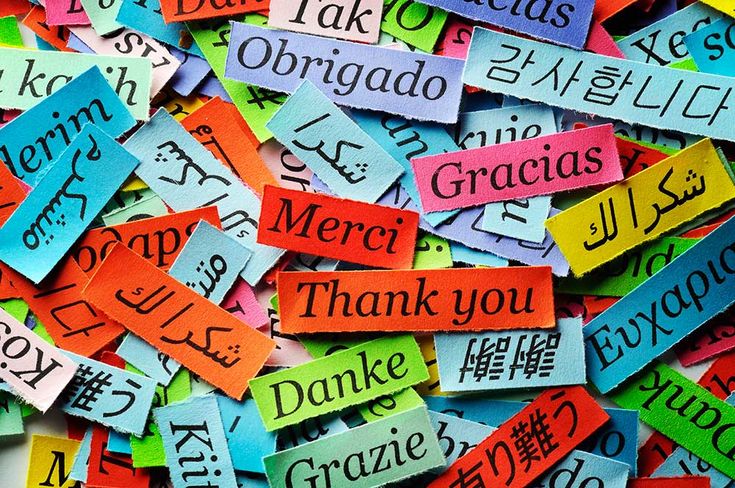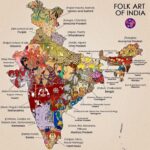The World of Languages: A Global Exploration of Culture and Communication
World of Languages: Languages are the thread that binds humanity together. They are not just a means of communication but also a reflection of culture, history, and the identity of individuals and societies. With over 7,000 languages spoken across the globe, the world of languages is vast and dynamic, influencing daily life in profound ways. From ancient tongues to modern dialects, languages are integral to how we perceive the world, interact with one another, and preserve traditions. This article explores the history, significance, and impact of languages on society and daily life.
History of Languages Around the World: World of Languages
The origin of language dates back to prehistoric times, with early humans developing vocal communication as a means to express needs and share information. Over millennia, these early forms of communication evolved into distinct languages, shaped by geography, culture, and societal needs. The development of writing systems, such as cuneiform in Mesopotamia and hieroglyphics in Egypt, marked a pivotal moment in the history of languages, allowing for the recording of history, laws, and culture.
As civilizations expanded and interacted, languages continued to evolve, influenced by migration, conquest, and trade. Ancient languages such as Sanskrit, Greek, and Latin became the foundations for many modern languages. Over time, languages diversified into different dialects, giving rise to the rich tapestry of languages spoken today.
World of Languages: list of countries along with their official or widely spoken languages. Note that some countries have multiple official languages, and many have additional regional or minority languages.
Africa
- Algeria – Arabic, Berber
- Angola – Portuguese
- Benin – French
- Botswana – English, Tswana
- Burkina Faso – French
- Burundi – Kirundi, French
- Cameroon – French, English
- Cape Verde – Portuguese
- Central African Republic – French, Sango
- Chad – French, Arabic
- Comoros – Comorian, Arabic, French
- Congo (Democratic Republic) – French
- Congo (Republic) – French
- Côte d’Ivoire (Ivory Coast) – French
- Djibouti – French, Arabic
- Egypt – Arabic
- Equatorial Guinea – Spanish, French, Portuguese
- Eritrea – Tigrinya, Arabic, English
- Eswatini (Swaziland) – Swazi, English
- Ethiopia – Amharic
- Gabon – French
- Gambia – English
- Ghana – English
- Guinea – French
- Guinea-Bissau – Portuguese
- Kenya – English, Swahili
- Lesotho – Sesotho, English
- Liberia – English
- Libya – Arabic
- Madagascar – Malagasy, French
- Malawi – English, Chichewa
- Mali – French
- Mauritania – Arabic
- Mauritius – English, French
- Morocco – Arabic, Berber
- Mozambique – Portuguese
- Namibia – English
- Niger – French
- Nigeria – English
- Rwanda – Kinyarwanda, French, English
- São Tomé and Príncipe – Portuguese
- Senegal – French
- Seychelles – English, French, Seychellois Creole
- Sierra Leone – English
- Somalia – Somali, Arabic
- South Africa – 11 official languages (including Zulu, Xhosa, Afrikaans, English)
- South Sudan – English
- Sudan – Arabic, English
- Tanzania – Swahili, English
- Togo – French
- Tunisia – Arabic
- Uganda – English, Swahili
- Zambia – English
- Zimbabwe – English, Shona, Ndebele
Asia
- Afghanistan – Pashto, Dari
- Armenia – Armenian
- Azerbaijan – Azerbaijani
- Bahrain – Arabic
- Bangladesh – Bengali
- Bhutan – Dzongkha
- Brunei – Malay
- Cambodia – Khmer
- China – Mandarin
- Cyprus – Greek, Turkish
- Georgia – Georgian
- India – Hindi, English (plus 21 other official languages)
- Indonesia – Indonesian
- Iran – Persian (Farsi)
- Iraq – Arabic, Kurdish
- Israel – Hebrew
- Japan – Japanese
- Jordan – Arabic
- Kazakhstan – Kazakh, Russian
- Kuwait – Arabic
- Kyrgyzstan – Kyrgyz, Russian
- Laos – Lao
- Lebanon – Arabic
- Malaysia – Malay
- Maldives – Dhivehi
- Mongolia – Mongolian
- Myanmar (Burma) – Burmese
- Nepal – Nepali
- North Korea – Korean
- Oman – Arabic
- Pakistan – Urdu, English
- Palestine – Arabic
- Philippines – Filipino, English
- Qatar – Arabic
- Russia – Russian
- Saudi Arabia – Arabic
- Singapore – English, Malay, Mandarin, Tamil
- South Korea – Korean
- Sri Lanka – Sinhala, Tamil
- Syria – Arabic
- Taiwan – Mandarin
- Tajikistan – Tajik
- Thailand – Thai
- Timor-Leste (East Timor) – Portuguese, Tetum
- Turkey – Turkish
- Turkmenistan – Turkmen
- United Arab Emirates (UAE) – Arabic
- Uzbekistan – Uzbek
- Vietnam – Vietnamese
- Yemen – Arabic
Europe
- Albania – Albanian
- Andorra – Catalan
- Austria – German
- Belarus – Belarusian, Russian
- Belgium – Dutch, French, German
- Bosnia and Herzegovina – Bosnian, Croatian, Serbian
- Bulgaria – Bulgarian
- Croatia – Croatian
- Czech Republic – Czech
- Denmark – Danish
- Estonia – Estonian
- Finland – Finnish, Swedish
- France – French
- Germany – German
- Greece – Greek
- Hungary – Hungarian
- Iceland – Icelandic
- Ireland – Irish, English
- Italy – Italian
- Kosovo – Albanian, Serbian
- Latvia – Latvian
- Liechtenstein – German
- Lithuania – Lithuanian
- Luxembourg – Luxembourgish, French, German
- Malta – Maltese, English
- Moldova – Romanian
- Monaco – French
- Montenegro – Montenegrin
- Netherlands – Dutch
- North Macedonia – Macedonian
- Norway – Norwegian
- Poland – Polish
- Portugal – Portuguese
- Romania – Romanian
- Russia – Russian
- San Marino – Italian
- Serbia – Serbian
- Slovakia – Slovak
- Slovenia – Slovenian
- Spain – Spanish
- Sweden – Swedish
- Switzerland – German, French, Italian, Romansh
- Ukraine – Ukrainian
- United Kingdom – English
- Vatican City – Italian, Latin
North America
- Antigua and Barbuda – English
- Bahamas – English
- Barbados – English
- Belize – English
- Canada – English, French
- Costa Rica – Spanish
- Cuba – Spanish
- Dominica – English
- Dominican Republic – Spanish
- El Salvador – Spanish
- Grenada – English
- Guatemala – Spanish
- Haiti – Haitian Creole, French
- Honduras – Spanish
- Jamaica – English
- Mexico – Spanish
- Nicaragua – Spanish
- Panama – Spanish
- Saint Kitts and Nevis – English
- Saint Lucia – English
- Saint Vincent and the Grenadines – English
- Trinidad and Tobago – English
- United States – English (no official language at federal level)
South America
- Argentina – Spanish
- Bolivia – Spanish, Quechua, Aymara
- Brazil – Portuguese
- Chile – Spanish
- Colombia – Spanish
- Ecuador – Spanish
- Guyana – English
- Paraguay – Spanish, Guarani
- Peru – Spanish
- Suriname – Dutch
- Uruguay – Spanish
- Venezuela – Spanish
Oceania
- Australia – English
- Fiji – English, Fijian, Hindi
- Kiribati – English, Gilbertese
- Marshall Islands – English, Marshallese
- Micronesia – English
- Nauru – Nauruan, English
- New Zealand – English, Māori
- Palau – English, Palauan
- Papua New Guinea – English, Tok Pisin, Hiri Motu
- Samoa – Samoan, English
- Solomon Islands – English
- Tonga – Tongan, English
- Tuvalu – Tuvaluan, English
- Vanuatu – Bislama, English, French
This list covers most countries and their primary or official languages.
The Role of Languages in Daily Life: World of Languages
Languages play a central role in shaping daily life, affecting everything from social interactions to cultural practices. Communication, both verbal and non-verbal, is fundamental to human connection. Here’s how languages impact daily life:
1. Social Identity and Connection:
Language is a crucial part of an individual’s identity. It shapes how people see themselves and how they are perceived by others. For instance, speaking a certain language can identify one’s ethnic or national background, and it can influence social relationships. Language is a key factor in forming communities, whether based on geographical location, profession, or shared interests.
2. Education and Learning:
Language is the primary medium for education and learning. Whether in schools, universities, or informal settings, language is essential for imparting knowledge. Multilingualism, the ability to speak more than one language, has been shown to enhance cognitive abilities, providing individuals with a broader perspective on the world.
3. Cultural Preservation:
Languages are carriers of culture, transmitting values, traditions, and customs. Many indigenous languages have been passed down through generations, preserving ancient knowledge, folklore, and traditions. When a language is lost, it often means the loss of a community’s cultural heritage and history.
4. Business and Global Interaction:
In today’s globalized world, language is a powerful tool in business and international relations. Multilingual individuals have an edge in the global market, as they can communicate with clients, partners, and customers from different parts of the world. The dominance of languages like English, Mandarin, Spanish, and Arabic reflects the economic and geopolitical power of the regions where these languages are spoken.
5. Technology and Digital Communication:
The rise of technology has led to the globalization of communication, with people from different parts of the world interacting online. As technology advances, language continues to play a key role in shaping how people engage with digital platforms. From social media to machine translation, language remains central to how we connect and share information.
Significant Facts About Languages: World of Languages
- Most Spoken Languages:
The most spoken languages in the world are Mandarin Chinese, Spanish, English, Hindi, and Arabic. These languages are spoken by billions of people globally, often across multiple countries and continents. - Endangered Languages:
It is estimated that one language dies every two weeks, with many indigenous languages at risk of extinction. The loss of these languages means the loss of unique cultural identities and knowledge systems. - Language Families:
Languages are categorized into families based on shared ancestry. Some of the largest language families include Indo-European, Sino-Tibetan, Afro-Asiatic, and Niger-Congo. These families group together languages that share common origins and linguistic features. - Language Diversity in India:
India is one of the most linguistically diverse countries in the world, with over 450 languages spoken across the nation. Hindi and English are the official languages, but regional languages such as Bengali, Telugu, Marathi, and Tamil are also widely spoken. - Language and Politics:
Language can be a powerful political tool. In many countries, language is tied to national identity, and conflicts over language have been at the heart of various political struggles. For example, in Belgium, the division between Dutch and French-speaking communities has played a major role in shaping the country’s political landscape.
FAQs About Languages: World of Languages
1. How many languages are spoken in the world today?
There are approximately 7,000 languages spoken around the world today. However, many of these languages are at risk of extinction due to globalization and the dominance of a few major languages.
2. What is the most widely spoken language in the world?
Mandarin Chinese is the most widely spoken language in the world, with over a billion speakers. It is followed by Spanish, English, and Hindi.
3. Can languages influence the way we think?
Yes, the language we speak can influence the way we think and perceive the world. Linguists believe that language shapes our cognition, affecting how we conceptualize time, space, and relationships.
4. What is multilingualism?
Multilingualism refers to the ability to speak and understand more than one language. It is a common phenomenon around the world, particularly in regions with diverse linguistic populations.
5. Why are some languages endangered?
Languages become endangered when the number of speakers declines, often due to factors such as globalization, migration, and the dominance of major languages. Younger generations may stop speaking endangered languages in favor of more widely spoken ones, leading to the loss of linguistic diversity.
The Significance of Languages in Society
Languages are not just a means of communication; they are the bedrock of cultural identity and community. They shape the way people express themselves, their emotions, and their beliefs. The preservation and promotion of linguistic diversity are essential for maintaining the world’s cultural richness.
In today’s interconnected world, language plays a crucial role in fostering global communication and understanding. By learning new languages, we can break down barriers, promote tolerance, and celebrate cultural diversity. Moreover, supporting endangered languages and revitalizing indigenous tongues is a critical step in preserving the world’s cultural heritage for future generations.
Conclusion: Wishing for a Future of Multilingual Harmony
The world of languages is vast and ever-changing. Each language tells a story, carries a history, and serves as a bridge between cultures. As we move towards a more interconnected world, it is important to celebrate linguistic diversity, preserve endangered languages, and embrace the power of communication. By doing so, we can create a future where languages continue to connect us in meaningful ways, fostering a more inclusive, harmonious, and understanding global society.










